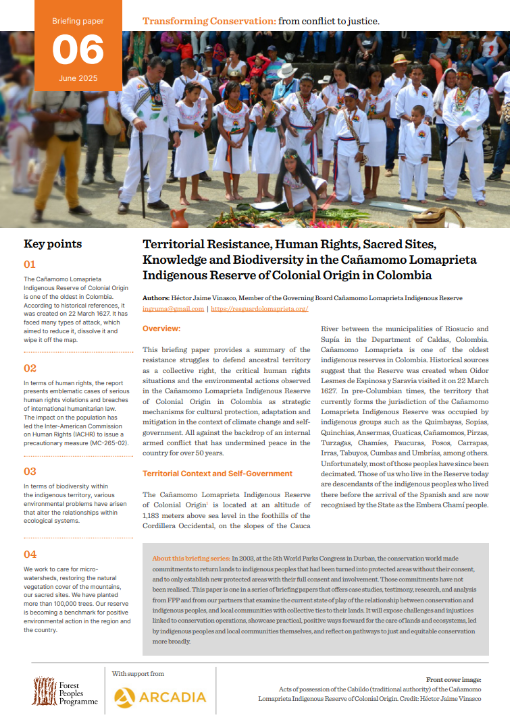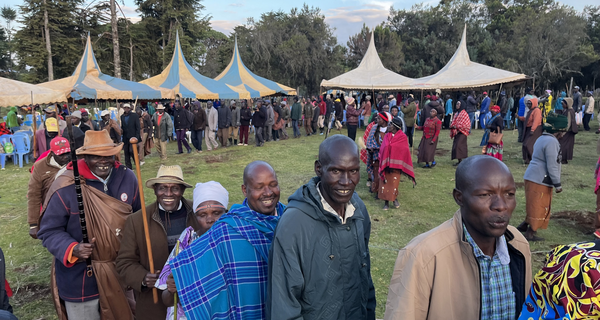
Territorial Resistance, Human Rights, Sacred Sites, Knowledge and Biodiversity in the Cañamomo Lomaprieta Indigenous Reserve of Colonial Origin in Colombia
Translations available: Spanyol
This briefing paper provides a summary of the resistance struggles to defend ancestral territory as a collective right, the critical human rights situations and the environmental actions observed in the Cañamomo Lomaprieta Indigenous Reserve of Colonial Origin in Colombia as strategic mechanisms for cultural protection, adaptation and mitigation in the context of climate change and self-government.
All against the backdrop of an internal armed conflict that has undermined peace in the country for over 50 years.
Key points:
- The Cañamomo Lomaprieta Indigenous Reserve of Colonial Origin is one of the oldest in Colombia. According to historical references, it was created on 22 March 1627. It has faced many types of attack, which aimed to reduce it, dissolve it and wipe it off the map.
- In terms of human rights, the report presents emblematic cases of serious human rights violations and breaches of international humanitarian law. The impact on the population has led the Inter-American Commission on Human Rights (IACHR) to issue a precautionary measure (MC-265-02)
- In terms of biodiversity within the indigenous territory, various environmental problems have arisen that alter the relationships within ecological systems.
- We work to care for micro-watersheds, restoring the natural vegetation cover of the mountains, our sacred sites. We have planted more than 100,000 trees. Our reserve is becoming a benchmark for positive environmental action in the region and the country.
This paper is number 6 of the briefing series Transforming Conservation: from conflict to justice.
Overview
- Resource Type:
- Briefing Papers
- Publication date:
- 27 Juni 2025
- Region:
- Colombia
- Programmes:
- Conservation and human rights
- Partners:
- Resguardo Cañamomo y Lomaprieta (RCMLP)


